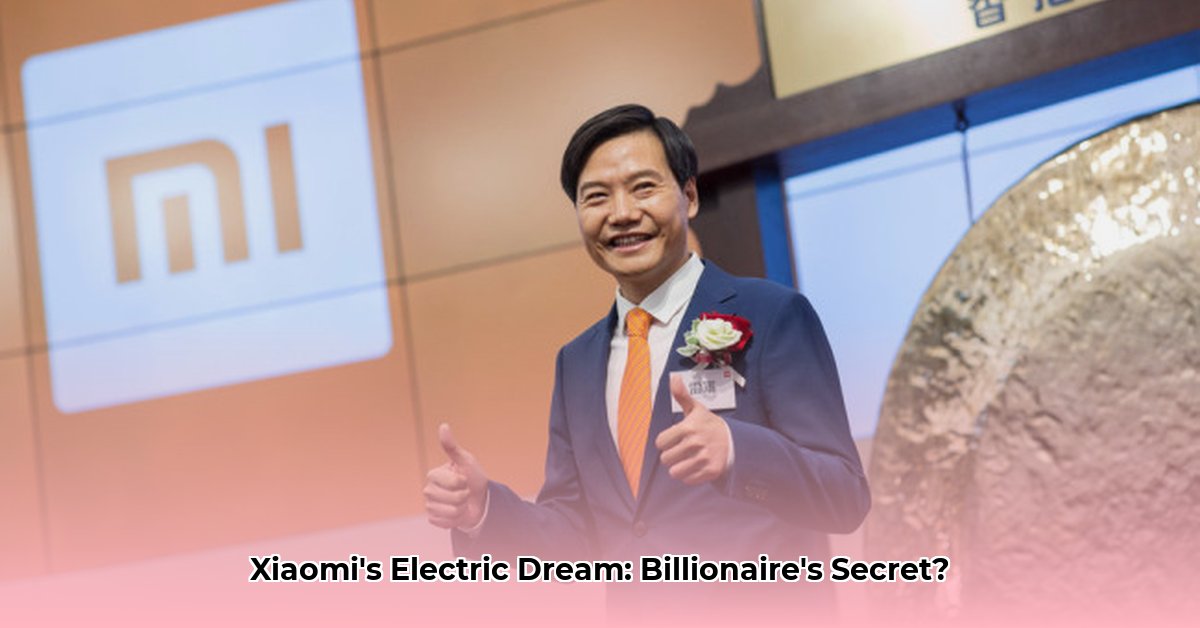
Lei Jun Net Worth: Riding the Electric Vehicle Wave
Lei Jun, CEO of Xiaomi, has experienced significant fluctuations in his net worth recently, largely due to Xiaomi's ambitious entry into the competitive Chinese electric vehicle (EV) market. His fortune, previously estimated in the billions of dollars, is now inextricably linked to the success of Xiaomi's foray into this rapidly evolving sector. The launch of Xiaomi's SU7, priced competitively at $30,000, has been a pivotal moment.
The initial response to the SU7 was overwhelmingly positive, with nearly 90,000 pre-orders within a single day. This remarkable achievement likely contributed significantly to Lei Jun's net worth, although the precise financial impact remains unquantified. However, questions surround the sustainability of this success. Can Xiaomi effectively scale its production to meet the high demand, and will this initial enthusiasm translate into lasting market dominance?
This early success, while promising, presents a significant challenge. The wait time for the SU7 currently extends up to seven months, indicating potential production bottlenecks. This delay could impact customer satisfaction and damage Xiaomi’s reputation if unaddressed, ultimately affecting future sales and negatively influencing Lei Jun’s net worth.
To mitigate these risks, Xiaomi has strategically partnered with BAIC Group, a prominent Chinese automaker. This collaboration provides access to substantial manufacturing expertise and resources, aiming to bolster production capacity and ensure smooth operations. However, sustained success hinges on multiple factors beyond initial sales: consistent profitability, effective marketing strategies, continued innovation, and navigating the complexities of government regulations and shifting consumer preferences.
"Lei Jun's commitment to the EV market is evident," explains Dr. Anya Sharma, a senior analyst at the Center for Asian Business Studies, University of California, Berkeley. "He refers to this venture as his 'last major startup project', illustrating his unwavering belief in Xiaomi's potential to dominate the EV sector."
Xiaomi's Strategic Risk Management
The Chinese EV market is fiercely competitive, characterized by aggressive price wars and rapidly evolving technologies. Xiaomi faces several key risks:
| Risk Factor | Likelihood | Potential Impact | Xiaomi's Mitigation Strategy |
|---|---|---|---|
| Intense Price Wars | High | Significant erosion of profit margins | Product differentiation through innovation, superior branding and strategic partnerships |
| Production Bottlenecks | Moderate | Significant impact on sales and customer satisfaction | Increased manufacturing capacity, optimized processes, diversified supply chains |
| Customer Satisfaction | Moderate | Negative impact on brand reputation and future sales | Proactive monitoring of feedback, rapid response to issues, enhanced after-sales service |
| Market Saturation | High | Reduced market share and profitability | Product diversification, exploration of international markets |
| Rapid Technological Advancements | High | Potential obsolescence of existing technology | Substantial investment in research and development |
Does the short-term success of the SU7 guarantee a continued surge in Lei Jun's net worth? The answer remains uncertain, and the long-term outcome depends largely on Xiaomi's ability to navigate these challenges effectively. The company's future performance will be a key determinant in shaping Lei Jun's financial trajectory.
How to Mitigate Xiaomi's Electric Vehicle Production Bottlenecks
Xiaomi's SU7 launch, while exceptionally successful, immediately exposed significant production bottlenecks. Over 100,000 pre-orders indicated a demand that far outstripped Xiaomi's initial manufacturing capacity. This wasn't simply a matter of insufficient factory space; it highlighted vulnerabilities in the company's supply chain, particularly concerning the timely procurement of key components.
Overcoming these limitations requires a multifaceted approach encompassing several key strategies:
Supplier Diversification: Reducing reliance on single-source suppliers safeguards against potential shortages and disruptions.
Automation Investment: Advanced robotics and AI-powered manufacturing solutions can significantly enhance efficiency and output.
Production Process Optimization: Implementing lean manufacturing principles minimizes waste and streamlines operations.
Strategic Partnerships: Collaborations with established component manufacturers ensure timely delivery and specialized expertise.
Proactive Inventory Management: Strategic buffering of essential components mitigates the impact of unforeseen disruptions.
Demand Forecasting Refinement: Accurate prediction of sales enables a closer alignment between production capacity and actual demand.
Geopolitical Risk Mitigation: Developing strategies to address potential impacts from global chip shortages and trade tensions is crucial.
The competitive landscape presents another significant challenge. Xiaomi must not only satisfy existing demand but also focus on continuous innovation to maintain its competitive edge. The ability to address these production bottlenecks and consistently meet market demands will ultimately determine Xiaomi’s long-term success, and as a consequence, influence the trajectory of Lei Jun's net worth.